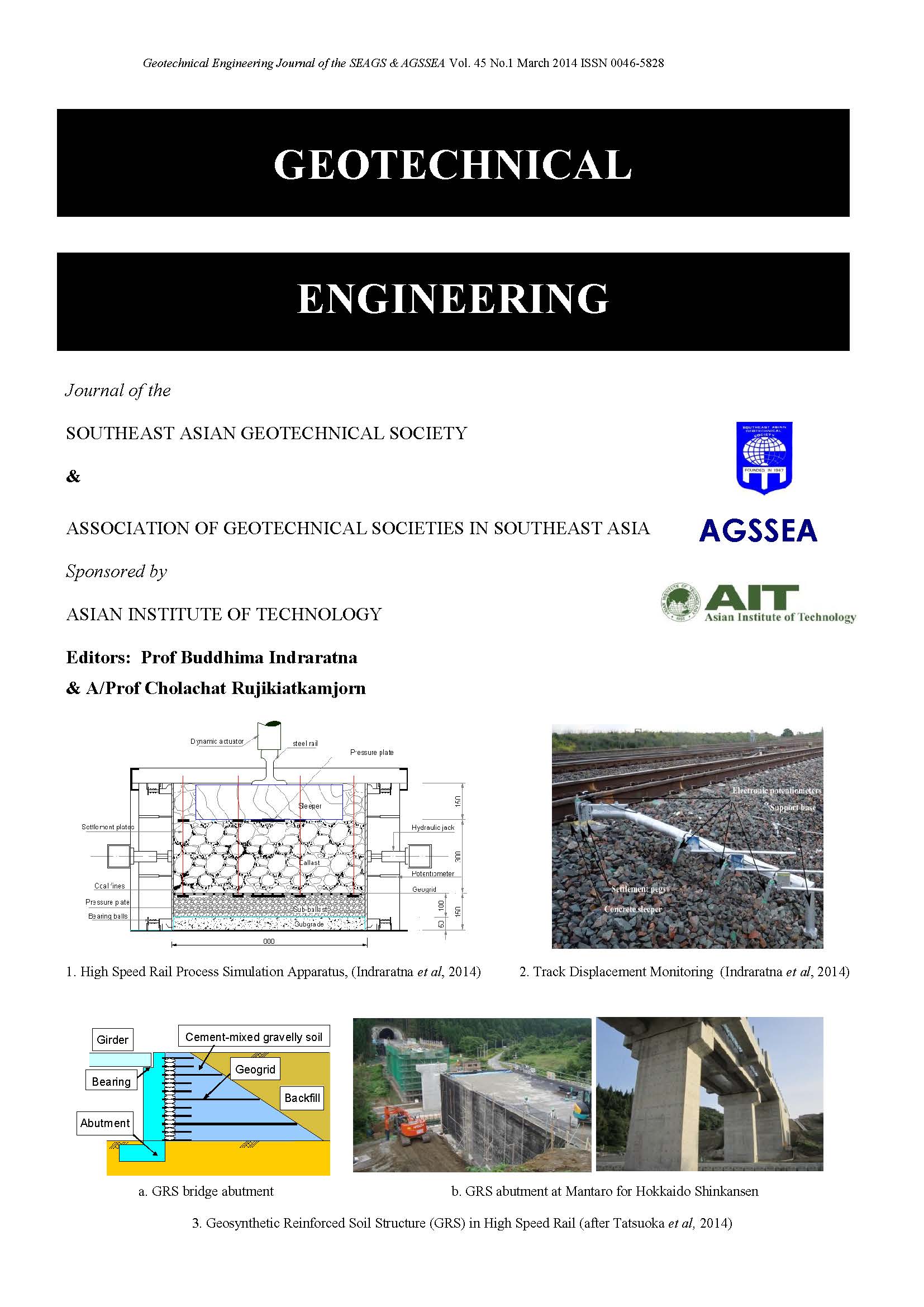Geosynthetic-Reinforced Soil Structures for Railways: Twenty Five Year Experiences in Japan
Main Article Content
Abstract
Geosynthetic-reinforced soil retaining walls (GRS-RWs) have been constructed for a total length more than 135 km mainly for railways, including high-speed train lines. A full-height rigid (FHR) facing is constructed, firmly connected to the reinforcement layers, after a full-height wrapped-around GRS wall has been constructed and the major residual deformation of the backfill and supporting ground has taken place. A number of this type GRS RWs performed very well during the 1995 Kobe Earthquake and the 2011 Great East Japan Earthquake. The seismic design code has been revised to be prepared for such level seismic loads as experienced during the 1995 Kobe EQ. A number of conventional type RWs and embankments that collapsed during these and other earthquakes, heavy rains, floods and storm wave actions were reconstructed to this type GRS RWs. A couple of new bridge types comprising GRS structures have been developed. The latest version is GRS integral bridge, which comprises a continuous girder integrated to the top of the facings of a pair of GRS RWs without using bearings. The first prototype was constructed for a high-speed train in 2012 and three others were also constructed to restore bridges that fully collapsed by great tsunami during the 2011 Great East Japan EQ.
Article Details

This work is licensed under a Creative Commons Attribution-NonCommercial-NoDerivatives 4.0 International License.
Copyright © 2019 Association of Geotechnical Societies in Southeast Asia (AGSSEA) - Southeast Asian Geotechnical Society (SEAGS).


